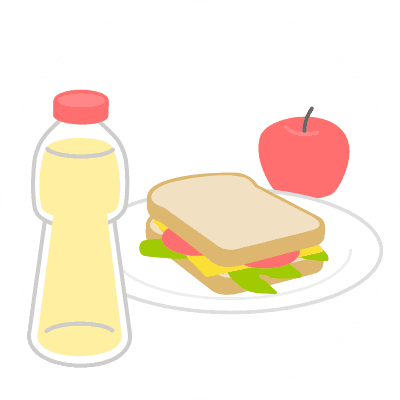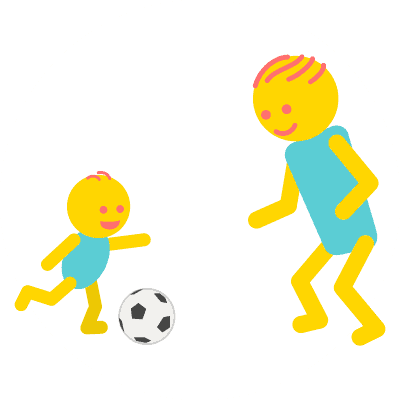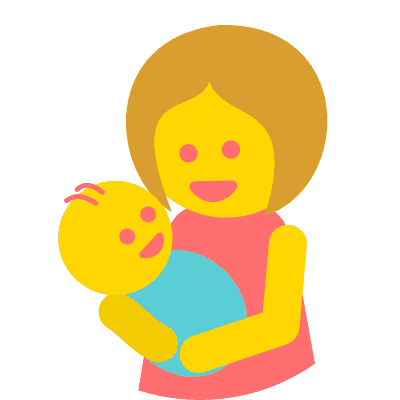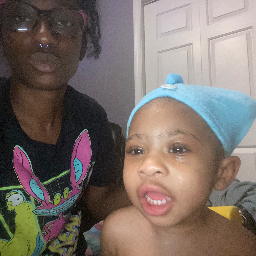Food Safety for Babysitters (Allergies, Hygiene, & Choking)


Written & Illustrated by
Matthew James Taylor
Kidsit Founder, General Manager

Medically Reviewed by
Gina Maria Jansheski, MD, FAAP
Board-Certified Pediatrician, Medical Reviewer
Key Takeaways
- Hand hygiene is essential: Always wash your hands with warm, soapy water for at least 20 seconds before and after handling food, before feeding infants and children, and after changing diapers or using the restroom.
- Be vigilant about choking hazards: Avoid giving children under the age of five smooth, round foods like hot dogs or grapes, as well as hard foods like hard candy.
- Understand and manage food allergies: Only give food that has been approved by the child's parent, and be aware of potential allergic reactions.
- Maintain kitchen safety: Avoid using the stove to prepare food, and if using a microwave, let the food cool for a few minutes before removing it to prevent burns.
- Follow age-appropriate feeding guidelines: For infants, prioritize breast milk or formula over other foods, and introduce solids only as directed by the parents.
When I first started to babysit, food safety was one aspect of looking after kids that seemed a bit overwhelming. Kids of a certain age might be perfectly okay to eat a particular food, while it's unsafe for others to eat the same food. But once you get the basics down, it's not too hard to keep kids safe while they're eating.
What food safety information is important to keep in mind for babysitters? Some food-related concerns, like allergies and hand washing, are important to consider regardless of a child's age. Other factors, such as choking hazards or limitations on what kids can eat, may apply more to specific age groups.
In this article, I'll lay out some food safety information that should be at the forefront of your mind as a babysitter. I'll give a few specific tips for infants, toddlers, and older kids. Then I'll go over some more general food safety information to consider while babysitting.
Jump to the main sections below:
- Safety first
- Child ages:
- Allergies
- Hygiene
- Kitchen hazards
Safety First
Make sure you have the proper safety qualifications so you know what to do in an emergency.
Here's a breakdown of babysitter first aid qualifications:
| Credential | Percent |
|---|---|
| 25.48% | |
| 24.74% | |
| 14.78% | |
| 12.49% | |
| 5.09% |
See our complete list of babysitting qualifications.
(Babysitting statistics calculated weekly from our live member data — Updated 21 Dec 2025)
Understanding Food Safety While Babysitting
Preparing food for kids is a common babysitting task so you need to know how to do it safely. 41.66% of babysitters have an interest in cooking, 56.19% can make snacks and light meals, and 37.95% are happy to make full meals.
Regardless of what ages of kids you're babysitting or what time of day you babysit, you'll have to give them some type of food. Whether that's bottles, snacks, or even preparing full meals, it is something you will have to plan for.
Each age has different requirements when it comes to what they can and can't eat, as well as specific precautions that need to be taken. Below, I'll provide some general information you can review periodically to make sure you’re keeping the kids you babysit for as safe as possible.
Do parents provide the food, or are you expected to? See my article Do Babysitters Provide Food? (What Parents May Expect From You) to find out!
Feeding Newborns and Infants (0 to 12 Months)
Newborns and infants are the most restricted group of kids when it comes to what you can feed them.
During their first few weeks of life, newborns need to eat about 8 to 12 times per day, in other words, every 1 to 3 hours. They should never go more than 4 or 5 hours between feedings. As they get a little older, they'll be able to have longer spans of time between feedings, especially while they are asleep.
Babies generally aren’t given solid foods for the first six months unless parents tell you otherwise. This is highly variable, however, so don’t be surprised if a parent has already started cereal or baby food at four months. (Many do it to help their babies sleep through the night or to last longer between feedings.) This is a decision that parents take very seriously, so don’t try to give anything to a baby unless the parents ask you to.
The most important thing for babies in this first year of life is breastmilk or formula. It’s not just a beverage, and it should take priority over other foods. This emphasis begins to shift, however, as babies approach their first birthday and should be eating age-appropriate forms of most table foods. After the first year, milk of any kind takes a back seat, and the focus should be on widening the scope of the foods they are eating, as well as encouraging self-feeding and drinking from a cup.
Give ONLY the foods and drinks that the parents specify, nothing more, nothing less, and don’t try something new or different.
Some signs a baby may be hungry include:
- Crying
- Moving their head from side to side
- Opening their mouth, sticking their tongue out, or licking their lips
- Putting their hands to their mouths repeatedly, or sucking on objects (remember, these actions are natural for this developmental stage, even when they are not teething, so don’t think they’re hungry every time they do it.)
When feeding babies formula, be sure to follow these important steps:
- Always read the directions on the label when preparing formula and mix it exactly as instructed. The manufacturer knows best when it comes to preparing their product, and babies can be harmed by changes in the ratio of powder to water.
- Prepared formula can be kept in the refrigerator for up to 24 hours. Any bottle that's left outside of the refrigerator for more than two hours should be discarded. You can read more on the guidelines for the preparation and storage of formula here.
- Breast milk in bottles outside of the refrigerator should also be used within two hours of the last feeding or discarded. Breast milk is more perishable, so it will usually be frozen and have to thaw before using. It should not be thawed in the microwave, just place it in a dish of warm water. See more instructions on the storage and handling of breast milk here.
- Discard any leftovers from a bottle that a baby doesn't finish. Don't save it to use next time. If you are feeding the baby expressed breast milk, however, you can hold on to the bottle for the two-hour period in case the baby gets hungry sooner and needs just a bit more. It’s a good idea to write down the time that you finish the previous feed, so you don’t forget when the two-hour safe period is up.
- The formula doesn't have to be warmed up, but most babies prefer milk that is slightly warmed instead of cold.
- Never microwave breast milk or formula, as it can heat up unevenly and cause burns, even if you test the bottle before giving it to baby. Instead, set it in a bowl of warm water for a few minutes to bring it up to an appropriate temperature. When you’re ready to feed, shake the bottle around to evenly distribute the formula, then test the temperature on the inside of your wrist before feeding the baby.
- Make sure to ask the parent exactly how many ounces their baby usually takes each feeding. There will usually be a range, but it helps to know what to try and shoot for, so you don’t over or underfeed.
- Hold the baby in your arms in a natural position when you give the bottle, almost like breastfeeding. Tip the bottle up slightly, but not too much. It is difficult to swallow if your neck is extended upward (try doing it yourself once, and you’ll see.) Watch the fluid in the bottle and keep it flush with the nipple so that the baby doesn’t take in a bunch of air instead of formula. Don’t ever prop the bottle on a pillow and leave a baby to feed alone. This can cause choking, and it also increases the risk of ear infections (source).
- Give the baby frequent breaks to rest and swallow, and burp them about halfway through the bottle feed. Feeding is a baby’s exercise, and young infants can get tired if they do it too long at a stretch. You’ll know if you see baby beginning to swallow wrong and choking a little, or when there is a significant amount of formula dripping down the sides of their mouth while feeding. Those are signs that you should just pause for a moment to give them a little break to regroup. Then they can start in again with a little more organized suck-swallow if they are still hungry.
47.38% of babysitters offer bottle feeding as part of their service.
See our baby formula guide for more details.
Avoid Overfeeding
Infants are more likely to overfeed if they're drinking from a bottle, as opposed to breastfeeding (source). A baby who's too full can experience gas, stomach pains, and will likely spit up more. So if you aren't sure how much a baby needs to eat, it's better to start off by giving them less, and you can always give them more later if they're still hungry. Try to watch for the baby to show you when they are done feeding, even if they haven’t yet taken the expected amount. Check out this video to learn how to read a baby’s cues for when they are hungry or full.
Newborns only need about 1–2 ounces per feeding at first. Between then and around two months of age, this will increase to 4 to 5 ounces per feeding, and up to 8 ounces by six months. But every baby is different, and it also depends on any solid food they may be eating too, so just follow the parent’s lead on this one.
Avoid These Foods For Infants
Do not give babies water until they are old enough to take solid foods. Many parents don’t even know this is a danger to newborns and young infants. The reason it is to be avoided is that it can dilute the electrolytes in their blood, causing the salt levels to go down, sometimes leading to seizures. Formula and breastmilk have a large water content—you know what you mix that powdered formula with? That’s right—water! And that is plenty for a baby’s needs, even in the warmest of climates.
Babies under one year of age should not be given honey. Younger babies can be affected by the toxin produced by a bacteria that can be present in honey, and it can cause a paralytic syndrome called botulism (source).
Another thing to hold off on giving until one year of age is cow’s milk. Some infants have an allergy to the protein in cow’s milk, and it can cause microscopic bleeding from irritation in the lining of the stomach and intestine (source). This bleeding is usually undetectable and goes undiscovered until someone tests them for anemia.
The American Academy of Pediatrics has recommended against giving babies juice in the first year of life. Fruits in their natural form (with their fiber), however, are highly nutritious and encouraged.
If you're making homemade baby food, avoid using canned vegetables or other canned foods. These often contain a lot of added salt or sugar, which shouldn't be used to make baby food. Generally, the parents will let you know which fruits and vegetables to give their baby, and if they don’t, just ask before giving.
New foods are to be given to babies one at a time over a period of days to weeks. This is recommended to determine if there are any allergies or reactions, then the parents will know which food may have caused it (source). You need to know this so that you don’t go ahead and try to give a new food to a baby. Let parents be the first ones to take that on. When you’re babysitting, you will just give what the baby has already tried and what parents know to be safe foods that their baby enjoys.
Need help with making bottles? See our Guide to making baby formula for all the tricks you need to know plus extra safety information.
Feeding Baby Food
If parents ask you to feed their kids store-bought baby food, always check that the safety button on the lid is down and that you hear a popping noise when you open it for the first time. If the lid on a new jar seems to have already been opened, don't use it. Also, do a visual inspection of the jar to make sure the lid isn't rusty, the glass isn't cracked or chipped, that it hasn’t gone beyond the expiration date, or anything else that might affect the food quality.
Baby food can be given cold, heated, or at room temperature. Just like with milk or formula, it's best to heat up baby food by placing the container in warm water. Microwaving is dangerous because it can create uneven hot spots in the food that can burn the baby's mouth.
Feeding Toddlers (12 to 36 months old)
Toddlers are done with breastfeeding and formula, and they will be learning to use a spoon and cup on their own! They’ll be eating most table foods at this point, and you will cut things into small pieces that they can mush around and pick up with their fingers. The messes are usually pretty big at the highchair these days, but you can have a lot of fun helping them learn to feed themselves.
You should be monitoring them closely during each meal, and never leave them alone while they're eating.
Avoid Choking Hazards
The big thing to remember with toddlers is that they're still babies and they can't swallow or chew as well as older kids yet. They might seem quite capable, but they’re playful and pretty distractible at this age, so don't get too comfortable and let your guard down.
Avoid giving toddlers foods like hard candy, popcorn, or nuts that they can choke on. Even soft foods that you may not think of as a choking hazard, like grapes or hot dogs, should be cut into very small pieces before being given to a toddler. I would also avoid gum or sticky foods like marshmallows or big hunks of peanut butter that can get stuck in the back of their throat. When giving fruit to toddlers, always wash it carefully, peel it fully, then cut it into bite-sized pieces. And don't forget to take out any pits or seeds.
The CDC website has a list of foods that might be choking hazards for young children. Remember, they might not have all of their teeth yet!
If the dreaded choking incident happens, you will rely on your skills from CPR training to help dislodge the food or object, depending upon the age of the child. This is something you should be trained on and ready for because it could happen anytime, either while eating or if a kid picks something up and puts it into their mouth. It is helpful to refresh your skills regularly by watching instructional videos such as:
Try These Foods for Toddlers
Good foods for toddlers include small pieces of dry toast or cereal, small-sized pasta, rice, minced meat, mashed beans, fresh fruits and vegetables (either smashed or cut into bite-sized pieces), bits of cheese, and yogurt.
Kids over 12 months of age can be given whole cow's milk, but it should be limited to 16–24 ounces (480–720 ml) per day, or it can lead to iron deficiency (source).
Toddlers can drink fruit juice without sugar added, but it should be diluted by half with water, and try to limit them to 4–6 ounces per day. Excessive fruit juice consumption in kids is linked to both malnutrition and obesity (source).
See my article How to Babysit a Toddler (28 Tips: Care, Activities & Discipline) for some extra toddler-specific advice.
Feeding Older Kids (4 Years and Older)
Younger kids around age 3 or 4 can start to help you in the kitchen with basic tasks. They can weigh ingredients, mix things with a spoon, wash vegetables, cut soft ingredients like butter with a plastic knife, and more.
By the time kids are around 5 years old, they can probably start to prepare basic snacks like a peanut butter sandwich with minimal assistance. But that doesn't mean there isn't still food safety and hygiene to keep in mind when babysitting older kids too.
Don't Force Kids to Clear Their Plate
Younger kids tend to be pickier and have a smaller appetite. So don't be surprised if they don't want to eat everything you put in front of them. As a babysitter, it's probably not your place to discipline kids regarding their eating habits.
Forcing kids to clear their plate isn't a good habit since it teaches them to eat food just because it's in front of them, not because they're hungry. This can lead to obesity and issues with food later in life. It is important for them to eat the healthy foods on their plates, however, before you give them desserts. So discuss with the parents how they would like you to handle this when it comes to mealtimes in general.
Opt for Healthier Choices
It can seem a lot easier to give kids a cookie or muffin as a snack instead of some fresh fruits and vegetables or to cook a frozen pizza instead of a fresh, more nutritious meal. So when you're given a choice, try to opt for healthier foods instead of immediately going for the greasy, sweet, or salty options.
Keep These General Food Safety Tips in Mind
Regardless of the age of kids you're babysitting, there are some food safety and hygiene rules that should always be followed.
Always Check for Allergies
Ask parents about allergies for any kids that you're babysitting for the first time, and be sure to take notes. If you babysit for a bunch of different families, it might be difficult to keep track of which kids are allergic to which foods. Review your notes each time you babysit as a reminder. Taking a moment to check every time could help prevent a potentially life-threatening allergic reaction.
It's probably not wise to try and give kids a new food they've never tried before when you are babysitting. But you don't necessarily need to steer clear of foods like nuts (depending on the child’s age), as long as parents give you the all-clear first.
The previous advice of experts was not to give any nut products like peanut butter to kids at an early age. But a study from 2015 demonstrated that introducing these foods early may actually reduce the risk of a nut allergy (source). In 2017, new guidelines became available to help doctors implement these findings (source). This practice is still evolving, and it remains important always to check with parents first before giving kids any foods that are common allergens like cow’s milk, nuts, eggs, or shellfish.
Use your babysitting binder to keep track of allergies for each child that you babysit. Check out my article Babysitting Binder (20 Documents & Fun Items to Include!) to create your own.
Cook Meat Thoroughly
All meat, poultry, eggs, or fish need to be cooked to safe internal temperatures. Make use of a food thermometer if you have access to one, and refer to a safe minimum internal temperature chart online. Different cuts of meat will all require cooking to different temperatures, depending on their thickness and other factors.
Kids have less developed immune systems than adults, so they're more vulnerable to food-borne illnesses. Don't feed kids rare steak, sunny-side-up eggs, raw oysters, raw cookie dough, or any other undercooked foods that contain animal products.
Enforce Strict Hand Washing
Everybody in the house should be washing their hands frequently. That includes any kids you're babysitting, as well as yourself. It's an important way to prevent the spread of germs and disease.
Be sure that you and the kids wash their hands both before and after handling any food. And you absolutely need to wash your hands after changing a baby's diaper, or after helping kids in the bathroom (and they should, too).
Both kids and adults should lather with soap and warm water for 20 seconds when washing their hands. It works well to sing the Happy Birthday song twice through to help kids know how long to lather up (source).
Check Food is a Safe Temperature Before Giving to Kids
I specifically mentioned checking food temperature for newborns, infants, and toddlers earlier in the article. But kids of all ages can burn their mouths, particularly if they're very hungry or eager to finish their meal quickly and get back to playing.
When you microwave food for kids, always start with the shortest suggested time. You can always heat it for longer if needed, but you can't quickly cool food off once it's too hot. Regardless of what you're cooking, it's good to take it out halfway through to stir. That way, it will heat to a more even temperature throughout, instead of having parts that are cold or lukewarm, while other parts may be scalding hot.
Pay particular attention to any foods with melted cheese, filled pasta, pizza pockets, burritos, or anything similar that can get very hot. It's a good idea to let these types of foods cool for about five minutes before serving them to kids.
Never hand hot food straight from the microwave to kids without checking it first or preparing it for them. For example, don't hand kids a bag of popcorn right after it's been heated. When they open the bag, the steam might escape into their face and burn them. Also, be careful with heated beverages, like hot chocolate. Just stir it first and give it a good check with a spoon before serving. Kids aren’t that good at just sipping slowly, and they typically don’t prefer food that’s really hot anyway.
Follow These Personal Hygiene Tips
In addition to washing your hands, there are some other food handling tips that you should follow to prevent illness.
What should you wear while babysitting? My article What to Wear When Babysitting (How to be Professional and Practical) will explain all!
Use Different Containers and Utensils for Raw vs. Cooked Foods
Don't go from using a knife and fork or spoon to work with raw animal foods to cooked foods or vice versa, particularly when preparing any type of meat (including chicken, fish). Otherwise, you will contaminate the cooked foods with bacteria from the raw food.
Also, don't put cooked meat back onto a plate or cutting board where raw meat has sat previously.
Always wash your hands whenever going between handling raw and cooked meats or raw eggs, as well.
Cutting boards or any other surfaces or containers that come into contact with raw meat need to be cleaned with hot water and soap after each use.
While cross-contamination is an issue with raw and cooked animal foods, you'll also want to avoid it after working with cleaning products or chemicals in the kitchen. Think about this when you are spraying a cleaning product or insecticide near food, or scrubbing the sink with an abrasive. Cover any nearby foods and wash your hands to prevent chemical contamination.
Don't Cough, Sneeze, or Touch Your Hair While Cooking
Avoid coughing, sneezing, and touching your nose, mouth, or hair while preparing or handling food. Prevent yourself from coughing or sneezing directly into the air or over food at all costs. If you do need to sneeze or cough and can't stop yourself, take a step away from the food, turn around, and do it into your hands or arm, and then wash your hands immediately afterward.
If you're really sick and coughing and sneezing a lot, have a conversation with parents about whether you're feeling well enough to babysit at all. If you're worried about getting the kids sick, you may want to opt for pre-packaged foods like granola bars, to try and reduce the chances of getting them sick via their food, and wash your hands more frequently.
A cough is bad enough because the virus causing it is easily transmissible through respiratory droplets. And if you're vomiting or have diarrhea (and we don’t have to get into how that is transmitted), you definitely shouldn't be babysitting, particularly for babies. Don't return to babysitting until 48 hours after your symptoms have stopped.
Avoid These Things While Preparing Food
When you're preparing food for kids to eat, there are some unsanitary habits that you should avoid doing at the same time. These include eating or drinking yourself, tasting the food and then putting that utensil back into it, licking your fingers, and smoking. All of these unsavory practices increase the risk of contamination.
I'd also recommend keeping mobile phones and other personal items away from where food is being stored and prepared. You've been touching your phone all day (let's face it, probably even in the bathroom), so avoid picking it up while handling food. Also, being on the phone is distracting and might contribute to you making one of these other errors or miss seeing a toddler getting into something dangerous.
If you have longer hair, tie it back or keep it covered while working with food. Try to keep your fingernails short so that dirt doesn't build up underneath them, and avoid wearing nail polish that can chip off into food while you're cooking.
If you've got any cuts or open wounds, cover them with a bandage while you're cooking (and while babysitting), especially if they're on your hands. Waterproof bandaids are recommended since you'll be washing your hands a lot, and bring a few replacements just in case they are needed.
When preparing food at the stove, make sure all pot handles are facing inward. You don’t want a toddler to come by, reach up and grab one, and pull it down. It all happens very quickly and is a common cause of burns in the kitchen. Also, make sure to keep little ones out from under your feet when you are carrying a hot pot of soup or taking something out of the oven.
Another all too common cause of accidents in the kitchen is leaving drawers and cabinets unlocked or open. Babies and toddlers are extremely curious, and if they see a bottle of cleaning solution, it can sometimes look like something tasty to drink. Most families have locks on their cabinets, but you still must be very careful to actually close them all the way for them to be effective. Because of this, it is recommended that all chemicals, insecticides, and cleaning products (especially things like dishwasher soap pods or tablets) be kept in high cabinets where little ones cannot reach them.
Manage Food Temperatures
A lot of food safety has to do with the temperatures at which foods are kept. Hot foods should be eaten while they're still warm, and any leftovers should be refrigerated without being left out at room temperature for too long.
Cold items like condiments or margarine should be placed back in the refrigerator after you're done using them—particularly mayonnaise, salad dressing, or items containing raw eggs and other unstable ingredients.
You should never attempt to refreeze a frozen food item once it has been thawed.
Wash Dishes in a Timely Manner
If parents have tasked you with preparing a meal for their kids, they generally expect you to wash the dishes after you're done and leave the kitchen in roughly the same condition that you found it.
After a nice night out, parents don't want to come home to a sink full of dishes. So after everybody has eaten, take 5 or 10 minutes to load the dishwasher, or wash all of the dishes, pots, and pans by hand if the family you're babysitting for doesn't have a dishwasher.
Not only are dirty dishes an unwanted chore and an unsightly thing to come home to, but dishes with bits of food on them can start to smell and develop bacteria if left for too long as well.
Be sure to keep younger kids playing in the kitchen while you wash up, so you can continue to keep an eye on them.
Identify Kitchen Hazards
The kitchen is full of lots of dangerous objects. But as adults, we have years of experience and have built up a sense of avoidance of these things that we take for granted.
Young kids don't necessarily know that a hot stove or oven can burn them or that knives are sharp. As a babysitter, you need to pay extra close attention to kids when you're in the kitchen and steer them clear of these hazards.
Even kitchen objects like cheese graters or can openers that we normally consider pretty safe can quickly pinch or cut when mishandled by a child. Most homes with kids will keep these kinds of objects out of reach. But be aware when you're using them so you don’t leave them out where kids can grab them if you aren't looking.
Not all hazards are sharp or hot, either. Even things like spilled water or other liquids on the floor can cause kids (or you) to trip and fall. Clean up any spills as they happen to avoid accidents and keep kids safe.
How to Clean Up Broken Glass and Plates
Younger kids should drink from plastic cups and eat off plastic plates if at all possible. They like to swing their arms and move around while eating, and spills are bound to happen. But older kids might drink out of regular glasses and eat off of ceramic plates without too much of a problem.
If a glass or plate drops to the floor and shatters, the first thing to do is get all kids and pets completely out of the situation. For older kids, close the door for a few minutes while you clean up. For younger kids that can't be left alone, try to set up a baby gate or some other type of barrier to keep them out of reach of the broken pieces and allow you to keep an eye on them.
Before you start cleaning up, check kids and pets for any scratches or cuts and address those first. If kids have any large piece of embedded glass in their skin, it's best to take them to the hospital to have it removed if it looks serious. A deep cut into a blood vessel may result in bleeding that is difficult to control once the embedded object is removed.
Once kids and pets are safe, it's time to protect yourself before you start cleaning up. Put your shoes on to protect your feet, and get some thick rubber gloves if you can find them. Use a dustpan and broom to scoop the fragments up, even the larger pieces of glass. Or you could use a pair of tongs if you don't have anything else available. Just don’t try to clean or pick up anything with your hands, even with gloves on.
Big pieces of glass should be put into a box, an empty tin, or a plastic container. If you don't have anything like that available, you can very carefully wrap the glass in several layers of paper (e.g., grocery bags, newspaper, junk mail) before putting it in a bag. Make sure to leave it outside in the garbage, not the bin in the kitchen.
Once you've swept up the entire area to get the larger chunks of glass, you'll want to vacuum to get any smaller pieces that you didn't pick up. If you look carefully, you may see tiny pieces of glass that are still on the floor sparkling in the light. If you’re worried there may still be glass on the floor, you can also go over it with a mop one final time after vacuuming.
Glass is less likely to break on carpet, but it's harder to clean up there than on a hard surface. If you're dealing with broken glass on carpet, try to use a wet paper towel or large pieces of tape to get the glass fragments out. Then you can vacuum up the smaller pieces.
Conclusion
There are a lot of important considerations to keep in mind when you're handling food as a babysitter. You have to worry about things like allergies, choking hazards, certain foods that infants or toddlers shouldn't have, and more.
Some things like washing your hands before and after handling food should be pretty obvious. But taking other precautions like keeping kid's fingers away from vegetable spiralizers might not be your first thought when you are busy making a meal.
After reading this article, food safety for babysitters should be at the forefront of your mind. And now you’ll have a good idea of what to do and common hazards you should look out for!
































